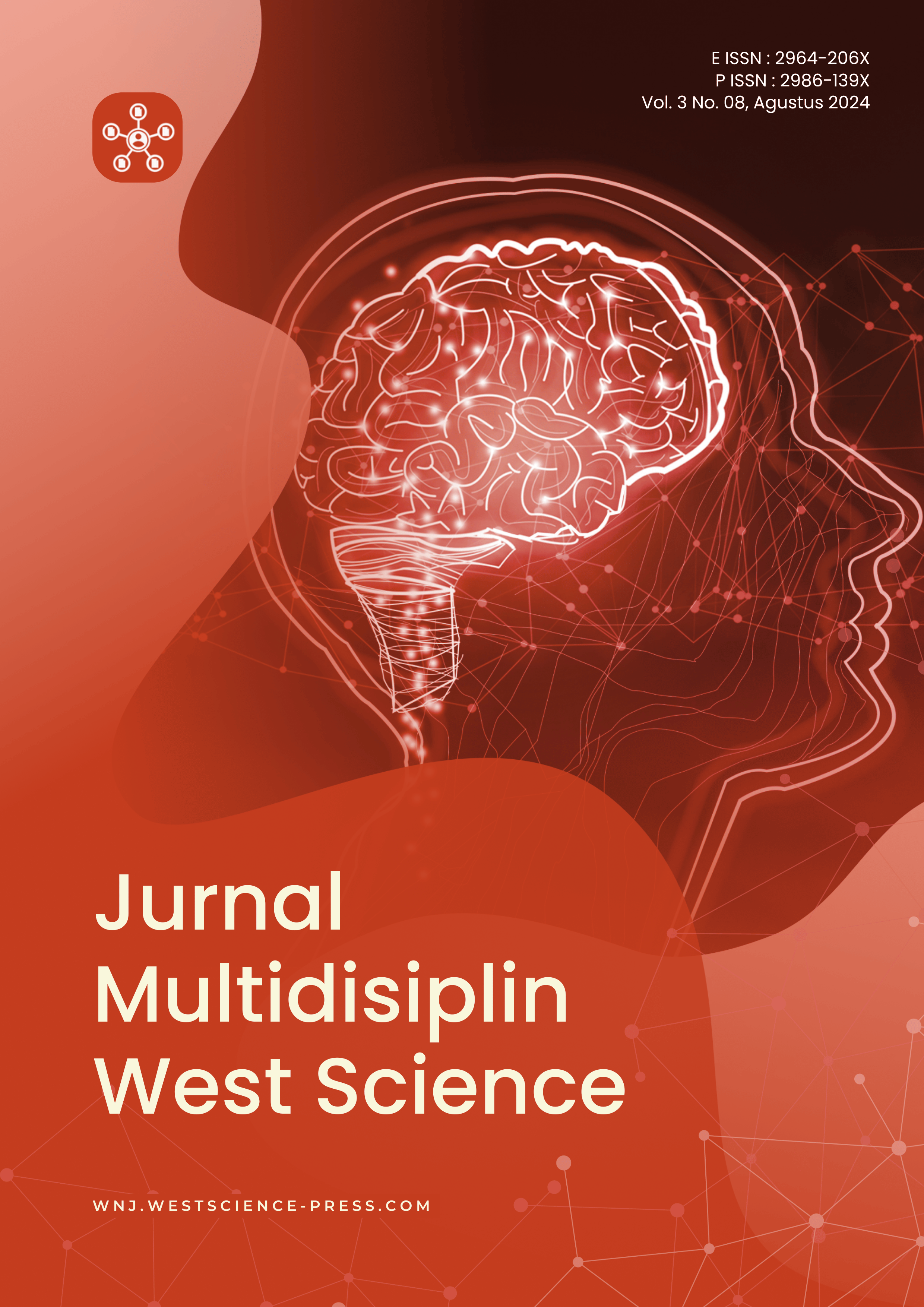Kontribusi Ekonomi Islam terhadap Pembangunan Ekonomi Lokal dan Nasional: Sebuah Studi Bibliometrik
DOI:
https://doi.org/10.58812/jmws.v3i08.1567Kata Kunci:
Ekonomi Islam, Keuangan Syariah, Pembangunan Ekonomi Berkelanjutan, Bibliometrik, VOSviewerAbstrak
Penelitian ini menganalisis kontribusi ekonomi Islam terhadap pembangunan ekonomi lokal dan nasional melalui pendekatan bibliometrik. Dengan memetakan kata kunci yang sering muncul dalam literatur menggunakan VOSviewer, penelitian ini mengidentifikasi fokus utama penelitian pada sektor keuangan syariah dan pembangunan ekonomi berkelanjutan. Visualisasi jaringan kolaborasi penulis menunjukkan adanya kluster penulis yang bekerja secara intens dalam kelompok yang terbatas, dengan kurangnya kolaborasi lintas disiplin. Selain itu, analisis kata kunci seperti "MSMEs" dan "COVID" menunjukkan perhatian baru terhadap peran UMKM dan tantangan pandemi dalam konteks ekonomi Islam. Hasil penelitian ini menunjukkan adanya kesenjangan penelitian pada topik seperti pertumbuhan ekonomi berkelanjutan, yang menunjukkan perlunya penelitian lebih lanjut. Kesimpulannya, diperlukan pengembangan kebijakan dan strategi yang mendukung penerapan prinsip-prinsip ekonomi Islam untuk menghadapi tantangan ekonomi global dan mendukung keberlanjutan ekonomi yang lebih inklusif.
Referensi
Abdullah, N., Ismail, S. M., Aminudin, N., Shuib, A. S., & Lau, B. F. (2012). Evaluation of selected culinary‐medicinal mushrooms for antioxidant and ACE inhibitory activities. Evidence‐Based Complementary and Alternative Medicine, 2012(1), 464238.
Ahmed, S., Creanga, A. A., Gillespie, D. G., & Tsui, A. O. (2010). Economic status, education and empowerment: implications for maternal health service utilization in developing countries. PloS One, 5(6), e11190.
Al-Tamimi, H. A. H., Lafi, A. S., & Uddin, M. H. (2016). Bank image in the UAE: Comparing Islamic and conventional banks. Islamic Finance, 14, 46–65.
Al Qardawi, Y. (1999). A Comparative Study of Zakah, Regulations and Philosophy in the Light of Qur’an and Sunnah. Translated by Monzer Kahf, 1.
Antonio, M. S., Sanrego, Y. D., & Taufiq, M. (2012). An analysis of Islamic banking performance: Maqashid index implementation in Indonesia and Jordania. مجلة التمويل الإسلامي, 176(813), 1–18.
Ascarya, A., & Yumanita, D. (2008). Comparing the efficiency of Islamic banks in Malaysia and Indonesia. Bulletin of Monetary Economics and Banking, 11(2), 95–119.
Asutay, M., & Turkistani, A. Q. (2015). Islamic finance. Gerlach Press.
Bairoch, P. (1988). Cities and economic development: from the dawn of history to the present. University of Chicago Press.
Cakir, S., & Raei, F. (2007). Sukuk vs. Eurobonds: Is there a difference in Value-at-Risk?
Chapra, M. U. (2000). Is it necessary to have Islamic economics? The Journal of Socio-Economics, 29(1), 21–37.
Chapra, M. U. (2016). The future of economics: An Islamic perspective (Vol. 21). Kube Publishing Ltd.
Çizakça, M. (2000). A history of philanthropic foundations: The Islamic world from the seventh century to the present. Boğaziçi University Press Istanbul.
Dusuki, A. W., & Abdullah, N. I. (2007). Why do Malaysian customers patronise Islamic banks? International Journal of Bank Marketing, 25(3), 142–160.
El-Gamal, M. A. (2006). Islamic finance: Law, economics, and practice. Cambridge University Press.
Ellegaard, O., & Wallin, J. A. (2015). The bibliometric analysis of scholarly production: How great is the impact? Scientometrics, 105, 1809–1831.
Fitriani, A., Rosidah, R., & Zafrullah, Z. (2023). Biblioshiny: Implementation of Artificial Intelligence in Education (1976-2023). Journal of Technology Global, 1(01 SE-Articles), 11–25.
Hampton, M. P. (2005). Heritage, local communities and economic development. Annals of Tourism Research, 32(3), 735–759.
Hassan, K., & Lewis, M. (2009). Handbook of Islamic banking. Edward Elgar Publishing.
Jaelani, A. (2017). Halal tourism industry in Indonesia: Potential and prospects. International Review of Management and Marketing, 7(3), 25–34.
Kahf, M. (1999). Islamic banks at the threshold of the third millennium. Thunderbird International Business Review, 41(4‐5), 445–460.
Kuran, T. (1995). Islamic economics and the Islamic subeconomy. Journal of Economic Perspectives, 9(4), 155–173.
Kuran, T. (2004). Islam and Mammon: The economic predicaments of Islamism. Princeton University Press.
Kuran, T. (2012). The long divergence: How Islamic law held back the Middle East.
Sadeq, A. M. (1997). Poverty alleviation: an Islamic perspective. Humanomics, 13(3), 110–134.
Siddiqi, A. (1981). Money and prices in the earlier stages of empire: India and Britain 1760-1840. The Indian Economic & Social History Review, 18(3–4), 231–262.
Siddiqi, M. N. (2008). Obstacles of research in Islamic economics. Journal of King Abdulaziz University: Islamic Economics, 21(2).
Wahab, A. R. A., Lewis, M. K., & Hassan, M. K. (2007). Islamic takaful: Business models, Shariah concerns, and proposed solutions. Thunderbird International Business Review, 49(3), 371–396.
Warde, I. (2010). Islamic finance in the global economy. Edinburgh University Press.
Unduhan
Diterbitkan
Cara Mengutip
Terbitan
Bagian
Lisensi
Hak Cipta (c) 2024 Loso Judijanto, Mega Ilhamiwati, Yana Priyana

Artikel ini berlisensiCreative Commons Attribution-ShareAlike 4.0 International License.



















 Instagram
Instagram 